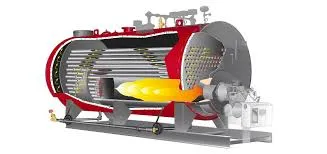
Dec . 22, 2024 05:16 Back to list
cost to replace steam heating system
Understanding the Cost to Replace a Steam Heating System
Replacing a steam heating system can be a significant investment for any property owner. Whether you are looking to upgrade an old system, improve energy efficiency, or replace malfunctioning components, knowing the associated costs is crucial for budgeting and decision-making. In this article, we will explore various factors that influence the cost of replacing a steam heating system, typical price ranges, and considerations for making an informed choice.
Understanding Steam Heating Systems
Steam heating systems have been used for decades in residential and commercial buildings. They work by boiling water to produce steam, which is then distributed through pipes and radiators to heat spaces. While they can be efficient and provide consistent heating, older systems may have higher operational costs and require frequent maintenance.
Factors Influencing Replacement Costs
Several factors come into play when determining the cost of replacing a steam heating system
1. System Type and Size The type of steam system (e.g., one-pipe or two-pipe systems) and the size of the home or building will significantly influence the cost. Larger buildings typically require more extensive systems, leading to higher labor and material costs.
2. New Equipment The cost of new equipment can vary widely. High-efficiency boilers may cost more upfront but can lead to significant savings in fuel costs over time. It's essential to choose a system that meets both your heating needs and budget.
3. Labor Costs The cost of installation labor can vary based on geographic location, the complexity of the installation, and the contractor's experience. Hiring a licensed and experienced HVAC contractor often ensures better quality work, though it may come at a higher price.
4. Existing Infrastructure If your current system has extensive ductwork or piping that needs to be replaced or modified, this will add to your overall costs. Conversely, if the existing infrastructure is in good condition, you may save on certain aspects of the installation.
cost to replace steam heating system

5. Permits and Regulations Depending on local building codes, you may need to obtain permits for the new installation. Compliance with regulations can also add to your costs, but it’s essential for safety and legality.
6. Energy Efficiency Upgrades Many homeowners choose to upgrade to more energy-efficient systems when replacing their steam heaters. While this can lead to higher upfront costs, the investment typically pays off in lower utility bills over time and may qualify for potential rebates or incentives.
Typical Cost Estimates
On average, the cost to replace a steam heating system can range from $3,500 to $8,000 for residential properties. This estimate includes the cost of the boiler, installation, and any necessary modifications to the existing piping or radiators.
- Low-end systems may cost around $3,500, typically for smaller homes using less expensive equipment. - Mid-range systems can fall between $4,500 and $6,500, which often includes a more efficient boiler and some necessary upgrades. - High-end systems that incorporate advanced technology and high-efficiency units can exceed $7,000 and may reach as high as $10,000, particularly for larger homes or more complicated installations.
Making an Informed Decision
When considering the replacement of a steam heating system, it’s essential to weigh the upfront costs against long-term savings. Here are a few tips to ensure you make a well-informed decision
1. Get Multiple Quotes Always seek estimates from several contractors to compare price and service offerings. 2. Research Equipment Brands Not all boilers are created equal. Research reliable brands known for efficiency and longevity. 3. Consider Long-term Efficiency Factor in energy costs and potential savings. Opting for a more efficient unit might be pricier initially but could provide significant savings down the road. 4. Evaluate Financing Options If upfront costs are a concern, explore financing options or potential rebates available through energy companies or government programs.
Conclusion
In conclusion, understanding the cost to replace a steam heating system involves more than just the price tag of the equipment. By considering various factors, potential savings, and making informed choices, property owners can ensure they select an option that meets their heating needs and budget effectively. Investing in a new system not only improves comfort but can also lead to significant energy savings in the long run.
-
Oil Fired Hot Water Boilers Sale - High Efficiency & Affordable
NewsJul.31,2025
-
High-Efficiency Commercial Oil Fired Steam Boiler for Industry
NewsJul.30,2025
-
High-Efficiency Biomass Fired Thermal Oil Boiler Solutions
NewsJul.30,2025
-
High Efficiency Gas Fired Thermal Oil Boiler for Industrial Heating
NewsJul.29,2025
-
High-Efficiency Gas Fired Hot Water Boiler for Sale – Reliable & Affordable
NewsJul.29,2025
-
High Efficiency Biomass Fired Hot Water Boiler for Industrial and Commercial Use
NewsJul.29,2025
Related PRODUCTS






















